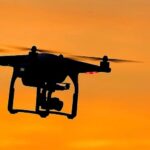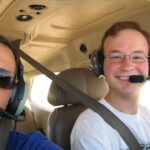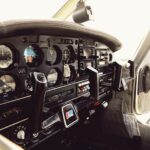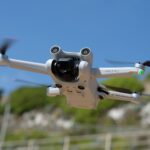
Flight Simulation: A Step Towards Real Skies?
Ever wondered if you could learn to fly from the comfort of your home? With the advent of flight simulation technology, the line between virtual skies and real-world aviation is becoming increasingly blurred. Microsoft Flight Simulator, a household name in the world of virtual aviation, offers an immersive experience that has many aspiring pilots asking: Can this software actually prepare me for the real thing?
Flight Simulation Technologies in Pilot Training
Flight simulators have long been an integral tool in training pilots. They provide a risk-free environment to practice maneuvers, understand aircraft systems, and master navigation. The technology ranges from simple desktop simulators to full-scale cockpit replicas that mimic the sensations of flight. Microsoft Flight Simulator sits comfortably in the middle, offering a balance of accessibility and realism that can be a game-changer for those starting their journey into aviation.
Understanding Microsoft Flight Simulator’s Potential in Aviation Education
Microsoft Flight Simulator isn’t just a game; it’s a sophisticated tool that models the Earth’s landscape, weather patterns, and aircraft physics. It can be an invaluable resource for learning the principles of flight and the complexities of aircraft controls. While it won’t grant you a pilot’s license upon completion, it can lay a strong foundation of knowledge and skills that are transferable to real-world flying.
Getting a Grip on the Controls Virtually
So you’ve booted up Microsoft Flight Simulator and you’re ready to start flying. What’s next? The first step is to get comfortable with the controls. Virtual flying is about understanding how to manipulate the aircraft using your keyboard, mouse, or joystick. It’s about learning how each control affects the plane’s behavior and how to manage them to achieve a smooth and safe flight.
Learning the Basics: Simulated Aircraft Operation
Imagine you’re in the cockpit, ready for takeoff. You push the throttle forward and feel the virtual plane accelerate down the runway. You pull back on the yoke, and the nose lifts off the ground. It’s a thrilling moment, even in a simulator, and it’s your first taste of what flying is all about.
Microsoft Flight Simulator allows you to experience these moments, teaching you the basic operations of an aircraft. From starting the engine to landing gear operations, you’ll learn the procedures that are fundamental to flying.
The Ins and Outs of Virtual Cockpit Familiarity
One of the most daunting aspects of learning to fly is getting to know the cockpit. It’s filled with dials, switches, and screens – each with a specific function. Microsoft Flight Simulator provides a detailed replica of these cockpits, allowing you to become familiar with the layout and operation of various instruments without the pressure of being airborne for real.
Navigating Through Digital Airspace
Once you’re comfortable in the pilot’s seat, it’s time to take to the skies. Microsoft Flight Simulator’s virtual world includes accurate topography, real-time weather systems, and a variety of airports to take off from and land at. This simulated environment is perfect for learning the basics of navigation, understanding airspace, and practicing communication with air traffic control.
Remember, while Microsoft Flight Simulator can provide a solid foundation, it’s essential to complement your virtual training with real-world experience and professional instruction. So, let’s get those virtual engines started and embark on a journey that takes you one step closer to the skies!
Mastering VFR and IFR Navigation in a Simulated Environment
Visual Flight Rules (VFR) and Instrument Flight Rules (IFR) are two cornerstones of navigation in the pilot’s world. Microsoft Flight Simulator provides an arena to practice these skills, with real-world weather conditions and a variety of scenarios. By flying virtually, you can familiarize yourself with reading sectional charts, interpreting instrument readings, and making decisions based on the simulated environment around you. This practice builds a mental framework that you’ll carry with you into actual flight training.
The Role of Flight Planning Software in Enhancing Pilot Skills
Flight planning is not just about plotting a course; it’s about understanding the intricacies of your route, the weather, and potential hazards. Flight planning software, often integrated into simulation programs like Microsoft Flight Simulator, teaches you how to create a robust flight plan. It’s a skill that goes beyond the basics, ensuring you’re prepared for longer and more complex flights, both virtually and in the real world.
Turning Theory into (Virtual) Reality
Theory is one thing, but applying it is another. Microsoft Flight Simulator turns theoretical knowledge into practical skills. By providing a platform to practice takeoffs, landings, and in-flight adjustments, the simulator helps solidify the concepts you’ve learned in textbooks or the classroom. It’s about making the connection between what you’ve read and what you do with your hands on the controls.
Practicing Standard Procedures and Emergency Protocols
Standard operating procedures and emergency protocols are critical for any pilot. In a simulator, you can rehearse these procedures without the stakes of real-life consequences. Microsoft Flight Simulator allows you to simulate engine failures, instrument malfunctions, and other emergencies, so you can build confidence in your ability to handle high-pressure situations.
From Simulators to Solo Flights: Bridging the Experience Gap
Simulators are a bridge between theory and actual flight experience. They give you a taste of what to expect and help build your confidence. However, the true test comes when you transition to solo flights. The key is to use the simulator as a supplement to your training, not a replacement. It’s about taking the skills you’ve honed virtually and applying them to the real-world challenges of piloting an aircraft.
Pros and Cons: The Simulator Training Debate
Like any training tool, flight simulators have their advocates and detractors. Some argue that simulators can instill bad habits or provide a false sense of security. Others champion them as an invaluable resource for safe, cost-effective training. The truth lies somewhere in the middle. Simulators are an excellent tool for certain aspects of training, but they can’t replicate the visceral experience of flying an actual aircraft.
What Simulators Excel at Teaching
Simulators are particularly adept at teaching the cognitive aspects of flying. They’re excellent for learning aircraft systems, practicing navigation, and understanding the effects of weather on flight. They also provide a platform for learning complex procedures and responding to emergency situations. What’s more, they allow for repetition and practice without the associated costs or risks of flying an actual aircraft.
Identifying Limitations: Where Simulators Fall Short
While simulators like Microsoft Flight Simulator are powerful tools, they have their limitations. The tactile feedback of controlling a real aircraft, the g-forces during maneuvers, and the emotional responses to actual flight conditions are aspects that simulation cannot fully replicate. Simulators also can’t provide the hands-on experience with aircraft maintenance or the nuances of real-world air traffic control communications. Understanding these limitations is crucial to using simulators effectively in pilot training.
Finding Value in Simulation Beyond the Cockpit
Simulators offer more than just flight training; they are a sandbox for experimentation and learning. They can be used to explore different types of aircraft and aviation technology, learn about global geography, and even understand the business aspects of running an airline through various simulation scenarios. This broadens the educational scope for aspiring pilots and aviation enthusiasts alike.
Enhancing Spatial Awareness and Anticipatory Skills
- Developing a mental map of the aircraft’s position in 3D space.
- Practicing scanning techniques to monitor instruments and the environment.
- Anticipating aircraft responses to control inputs.
- Learning to predict other traffic’s movements and intentions.
- Improving decision-making under simulated flight conditions.
- Using simulation to visualize complex flying scenarios and weather patterns.
These skills are critical in real-world flying, and simulators provide a safe environment to cultivate them.
Incorporating Simulators into Professional Pilot Training Programs
Professional pilot training programs have embraced simulators as an essential component of their curriculum. Simulators allow student pilots to log hours and practice scenarios that might be too dangerous or impractical in a real aircraft. By integrating simulators, training programs can offer a more comprehensive education that prepares students for the variety of challenges they will face as professional pilots.
Real Pilots’ Perspectives: Testimonials on Simulator Training
Many seasoned pilots credit simulators for giving them a head start in their training. They share stories of how simulation helped them understand complex concepts and develop a feel for flying before ever leaving the ground. These testimonials highlight the value of simulators in building a solid foundation for budding aviators.
From Virtual to Actual: Success Stories and Cautions
There are countless success stories of pilots who transitioned from virtual to actual cockpits with ease, thanks to the skills and confidence gained from simulators. However, these stories also come with words of caution: a simulator is not a complete substitute for real-world experience. The key is to approach simulation as a complement to flight training, not a replacement.
Using Microsoft Flight Simulator as a Supplementary Training Aid
Microsoft Flight Simulator can be a valuable addition to your pilot training toolkit. It’s perfect for practicing flight procedures, familiarizing yourself with different aircraft types, and understanding the basics of aerodynamics. When used alongside actual flight training, it can help reinforce lessons and provide additional practice that can make all the difference in your development as a pilot.
Leveraging Microsoft Flight Simulator for Your Aviation Journey
Microsoft Flight Simulator is more than just a game; it’s a powerful learning tool that can be an integral part of your aviation education. By using this tool effectively, you can accelerate your learning curve and enter your real-world flight training with a significant advantage. It’s all about how you use the simulator to complement your hands-on training.
Setting Up Your Simulator for Maximum Learning Impact
To get the most out of Microsoft Flight Simulator, it’s crucial to set it up with learning in mind. Start by choosing the right equipment, like a quality joystick or yoke and rudder pedals, to mimic the feel of real aircraft controls. Next, adjust the settings for realism; turn on all the assists at first, and gradually reduce them as you become more comfortable. Lastly, follow a structured learning plan that aligns with real-world training syllabi. This approach ensures that your time in the simulator translates into tangible flying skills.
Integrating Simulator Experience into Real-World Training
Blending simulator experience with actual flight training can be incredibly beneficial. Use the simulator to practice maneuvers before and after lessons to reinforce what you’ve learned. It’s also a great way to prepare for upcoming lessons, giving you a head start on new concepts and procedures. Always debrief with your flight instructor about your simulator sessions to ensure that you’re practicing correctly and not developing any bad habits.
Frequently Asked Questions (FAQ)
Can I log flight time on Microsoft Flight Simulator towards my pilot’s license?
While Microsoft Flight Simulator provides an excellent training platform, the time spent flying virtually cannot be logged as official flight hours towards your pilot’s license. However, it is an invaluable tool for practicing and mastering the theoretical knowledge and procedural skills that are essential for pilots.
How realistic are the flight physics in Microsoft Flight Simulator?
The flight physics in Microsoft Flight Simulator are highly realistic and provide a close approximation to real-world flying. The developers have worked to simulate the aerodynamics and environmental effects accurately. While it’s not a perfect replication, it’s sophisticated enough to be a useful training aid for understanding how aircraft respond to pilot inputs and external factors.
Which aspects of flying can I learn with Microsoft Flight Simulator?
Microsoft Flight Simulator can teach you a wide range of flying aspects, including:
- Aircraft controls and instrumentation
- Takeoff and landing procedures
- Basic and advanced flight maneuvers
- Navigation, including both VFR and IFR
- Flight planning and execution
- Weather effects and decision-making
- Emergency procedures
While it’s a fantastic resource, remember that it should be used as a supplement to actual flight training with a certified instructor.
How can I make the transition from simulation to actual flight smoother?
The jump from simulation to actual flight can be a big one, but there are ways to make it smoother. First, use the simulator to practice the procedures you’ll use in the aircraft until they’re second nature. Then, when you’re in the real plane, you won’t be bogged down by trying to remember checklists; you can focus on the feel of the aircraft. Secondly, communicate with your flight instructor about your simulation experience. They can tailor your lessons to build upon what you’ve learned virtually. Lastly, keep a learning diary. Document what you’ve practiced in the simulator and reflect on how it applies to real-world flying. This will help bridge the gap between the two experiences.
Where does Microsoft Flight Simulator fit in a formal pilot training curriculum?
Microsoft Flight Simulator can be a valuable part of a formal pilot training curriculum, particularly in the early stages of flight education. It serves as a cost-effective and risk-free platform for students to familiarize themselves with aircraft instruments, navigation, and the effects of weather on flight. In a structured curriculum, it can be used to introduce concepts before students experience them in the air, reinforce lessons post-flight, and allow for additional practice of maneuvers and procedures. It’s important, however, that its use is guided by flight instructors to ensure that students are developing correct and safe flying habits.






Leave a Reply